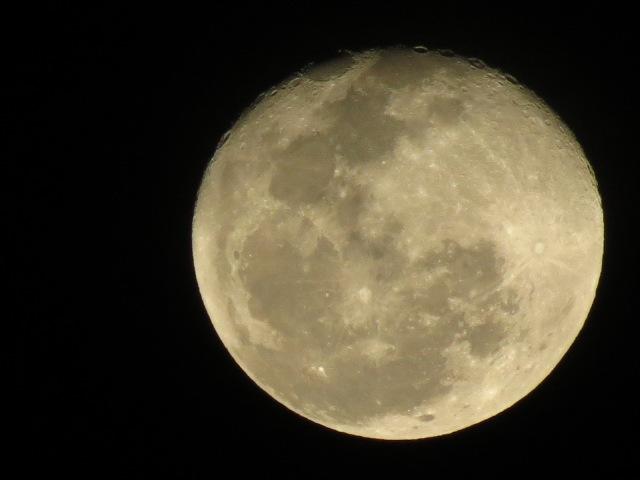
Caption
NASA could return astronauts to the moon in a few years.
Credit: Photo courtesy of Carlos Rosemberg via stock.xchng
LISTEN: Astronauts could return to the moon in a few years, and if they do, they might be wearing spacesuits designed with the help of Georgia Tech's Thom Orlando. He's a professor of chemistry and physics and a co-founder of the Center for Space Technology and Research. GPB's Peter Biello speaks with him.

NASA could return astronauts to the moon in a few years.
Astronauts could return to the moon in a few years, and if they do, they might be wearing spacesuits designed with the help of Georgia Tech's Thom Orlando. He's a professor of chemistry and physics and a co-founder of the Center for Space Technology and Research. He spoke with GPB's Peter Biello about the science of spacesuit design.
Peter Biello: You're taking into account a variety of factors when you're designing these suits, including temperature. Tell us a little bit about the extremes that you're considering when designing the suit.
Thom Orlando: That's an important question. So there are extremes in many respects. There's temperature extremes. If they're out there in the nighttime, the temperatures get remarkably low. So the temperature isn't that big of a deal actually, with regard to stuff sticking to the suit. And you wouldn't guess this, but it turns out to be the dust and the dust sticks because it's charged. And these suits will pick up like an electrostatic cloth or plastic and you'll get a lot of these charged grains sticking to the suit. And that's a real problem. So the astronauts are very concerned with the dust.
Peter Biello: And so what have you been able to do to keep the dust from sticking so much?
Thom Orlando: One of the things that you would like to do — and this is a focus of ours — is to make it so that these materials don't allow electrostatic buildup of particles. The easiest way to do that is to have it [be] conductive. And it doesn't sound like you want to have a metal suit on the astronauts. It's sort of going back to the medieval days of armor, right? But it's not that. It's actually a really, really thin coating of very, very lightweight material that has very high conductivity. And it allows the suit to have a conductive path that will shed the particles if they were to try to adhere.
Peter Biello: And what about radiation? Radiation is a huge concern for astronauts. How do you protect astronauts from exposure to radiation?
Thom Orlando: The moon is actually out of our magnetosphere. So you have to shield yourself. You have to have really good shielding to protect yourself from radiation. The mantra is: We're going to the moon and we're going to go there for relatively long time periods, much greater than the time periods that the astronauts spent during the Apollo mission. But what we really need to do is mitigate risk. And "mitigate risk" means to have better shielding — and not only better shielding, but better monitoring of the radiation. So that's kind of a neat thing that we're trying to do with the spacesuits as well. So this conductive material, or a variant of that, you can measure the change in the conductivity brought about by radiation. And so the idea there is to use the suits as sort of real-time monitors of your total dose of ionizing radiation while you're wearing the suit out on what's called an extravehicular activity. So when you're out on the moon surface, for example.
Peter Biello: So if you're wearing one of these suits out on the moon's surface and the suit has a sensor, it can say, "All right, you've had way too much radiation today. Get back in the ship. You're done for now or you're going to be at extremely high risk."
Thom Orlando: It's exactly the idea. And we also are trying to sort of monitor where the radiation is. If there's particularly vulnerable organs within your body that may be more susceptible, we would know what your total dose is and then where the dose was on the body. NASA's extremely concerned with mapping out the radiation profile on the on the astronauts. And they have these mannequins that are equipped with the suits to monitor radiation on the mannequins during the Artemis Mission flight plan.